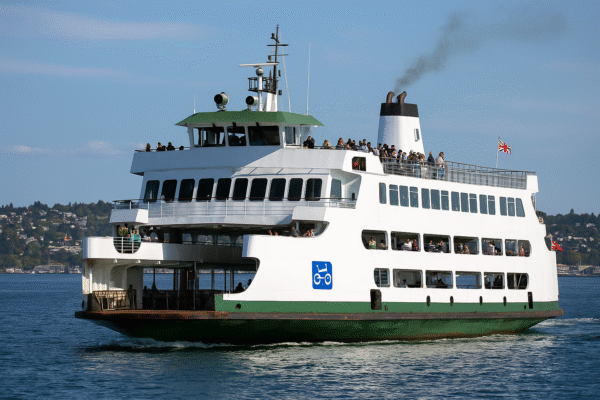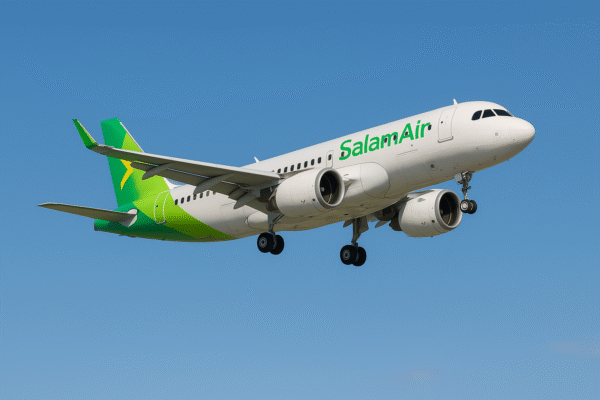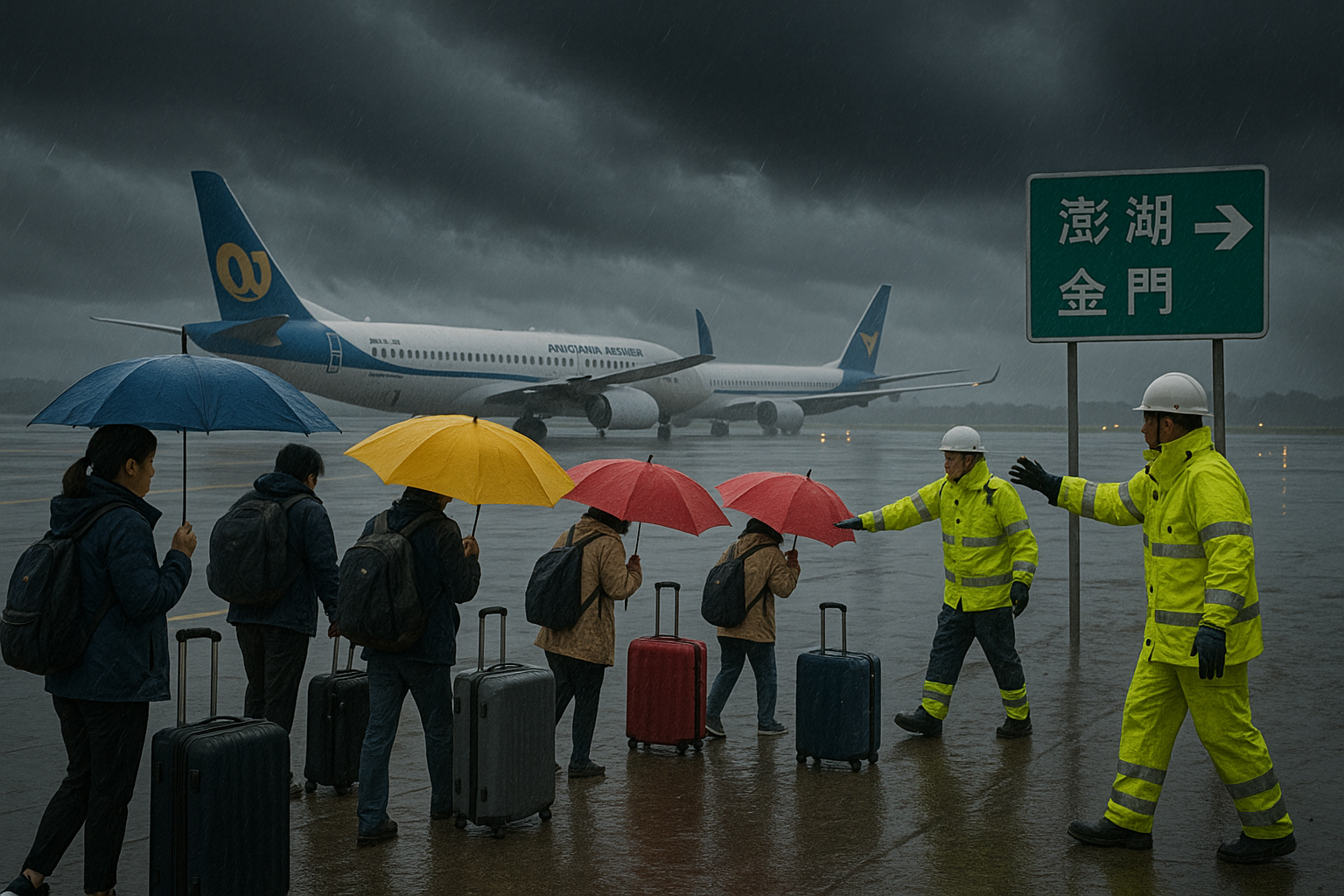Typhoon Danas has delivered a serious blow to Taiwan’s travel and tourism sectors, paralyzing transportation systems, stranding tens of thousands of travelers, and shutting down access to key tourist destinations. As the storm surged northward across the island over the weekend, high winds, torrential rain, and landslides caused extensive damage to roadways and grounded both domestic and international flights.
By Monday, July 7, Taiwan’s Ministry of Transportation confirmed the cancellation of over 258 domestic flights and multiple ferry routes due to dangerous weather conditions. Taiwan’s Civil Aeronautics Administration (CAA) reported that smaller carriers like Mandarin Airlines and UNI Air had suspended all domestic operations on Sunday, particularly those servicing the outlying islands of Penghu, Kinmen, and Matsu. Limited operations resumed Monday afternoon, but only as weather conditions permitted.
Thousands of Tourists Stranded on Islands
One of the most heavily affected areas is Penghu, where more than 8,000 tourists have been unable to return to the mainland. Taiwan’s Ministry of National Defense has been placed on standby to deploy military aircraft to aid in evacuation efforts, should commercial options remain insufficient.
In addition to Penghu, Xiaoliuqiu and Matsu have also seen a high number of stranded residents and visitors. The Ministry of Transportation and Communications (MOTC) announced that over 100 supplemental flights would be added in the coming days, prioritizing those stranded on offshore islands.
Airline Disruptions: International and Domestic Routes
International air traffic was also severely affected. China Airlines suspended major international connections out of Kaohsiung, including:
- Kaohsiung–Tokyo Narita
- Kaohsiung–Bangkok
- Kaohsiung–Osaka
- Kaohsiung–Okinawa
- Kaohsiung–Shanghai Pudong
- Kaohsiung–Hong Kong
Both Taiwan Taoyuan International Airport and Kaohsiung International Airport experienced delays due to ground handling limitations caused by strong winds and heavy rainfall. Passengers are being urged to check real-time updates via airline websites or the official Taoyuan and Kaohsiung airport portals.
Ferry Suspensions Disrupt Island Connectivity
Ferry services were halted across multiple critical sea routes, worsening the travel bottleneck. According to Taiwan’s Maritime and Port Bureau:
- Keelung–Matsu ferries were canceled from Saturday through Monday morning.
- Donggang–Xiaoliuqiu ferries have been suspended since Saturday afternoon, with possible resumption on Wednesday.
- Kinmen and Penghu routes remain uncertain, though partial service resumed Monday afternoon.
These ferry disruptions have deeply impacted tourism-dependent communities, particularly in archipelagic counties that rely on high-season travel revenue.
Taiwan Rail and Road Services Hit Hard
While the Taiwan High-Speed Rail continued to operate with minimal delays, the Taiwan Railways Administration (TRA) suspended the South Link Line—a critical route connecting Pingtung and Taitung—due to landslides. Service was restored by late Monday, but several smaller branch lines are still undergoing inspections.
Multiple roadways also suffered landslides, erosion, and flooding. The Directorate General of Highways announced closures on:
- Central Cross-Island Highway
- National Highway 3 (Formosa Freeway), where a fatal crash occurred
- Provincial Highways 9, 18, 20, and 29, which remain closed in affected segments
Drivers have been advised to avoid mountain passes and flood-prone valleys as recovery and clearing operations continue.
Tourist Attractions Temporarily Closed
Taiwan’s Forestry Bureau and the Tourism Bureau shut down several popular attractions ahead of the storm’s landfall:
- Kenting National Park
- Alishan Forest Recreation Area
- Hehuanshan, Wuling, Aowanda, and Dasyueshan Forest Parks
- Fushan Botanical Garden and Shuangliu Recreation Area
These closures, while temporary, could have lasting consequences on Taiwan’s tourism industry, particularly as July marks the start of the summer travel season. The Ministry of Transportation is currently assessing damage to infrastructure in national parks and scenic zones.
Emergency Response and Government Measures
President Lai Ching-te convened a high-level emergency meeting at the Central Disaster Response Center on Sunday to coordinate disaster relief, emphasizing inter-agency cooperation. The Central Weather Administration (CWA) continued issuing typhoon warnings into Monday, particularly for southern and central counties experiencing persistent rain bands.
Municipal governments have opened temporary shelters and coordinated with local tourism boards to provide emergency accommodations and meals for stranded tourists. Relief flights and restored ferry operations will be prioritized based on vulnerability assessments and weather clearance.
What Travelers Should Know Now
As recovery efforts ramp up, Taiwan’s Tourism Bureau recommends the following:
- Check with official airline, ferry, and government websites before making travel decisions.
- Monitor updates from Taiwan’s Central Weather Administration for real-time typhoon alerts.
- Defer travel to outlying islands like Penghu, Matsu, and Kinmen until full services resume.
- Expect delays and itinerary changes well into the coming week as infrastructure assessments continue.
Geo-Tagging:
- Affected Regions: Taipei, Kaohsiung, Penghu County, Kinmen County, Matsu (Lienchiang County), Taitung County, Pingtung County, Hualien, Nantou County
- Coordinates of Impact Epicenter: Approx. 23.7°N, 121.0°E (central Taiwan)
As Typhoon Danas moves away from Taiwan’s main island, recovery operations are now underway, but the full restoration of air, sea, and land travel may take days—or even weeks. The typhoon has highlighted the fragility of travel infrastructure in the face of intensifying climate events, a factor increasingly shaping travel planning across East Asia.
For more travel news like this, keep reading Global Travel Wire


















